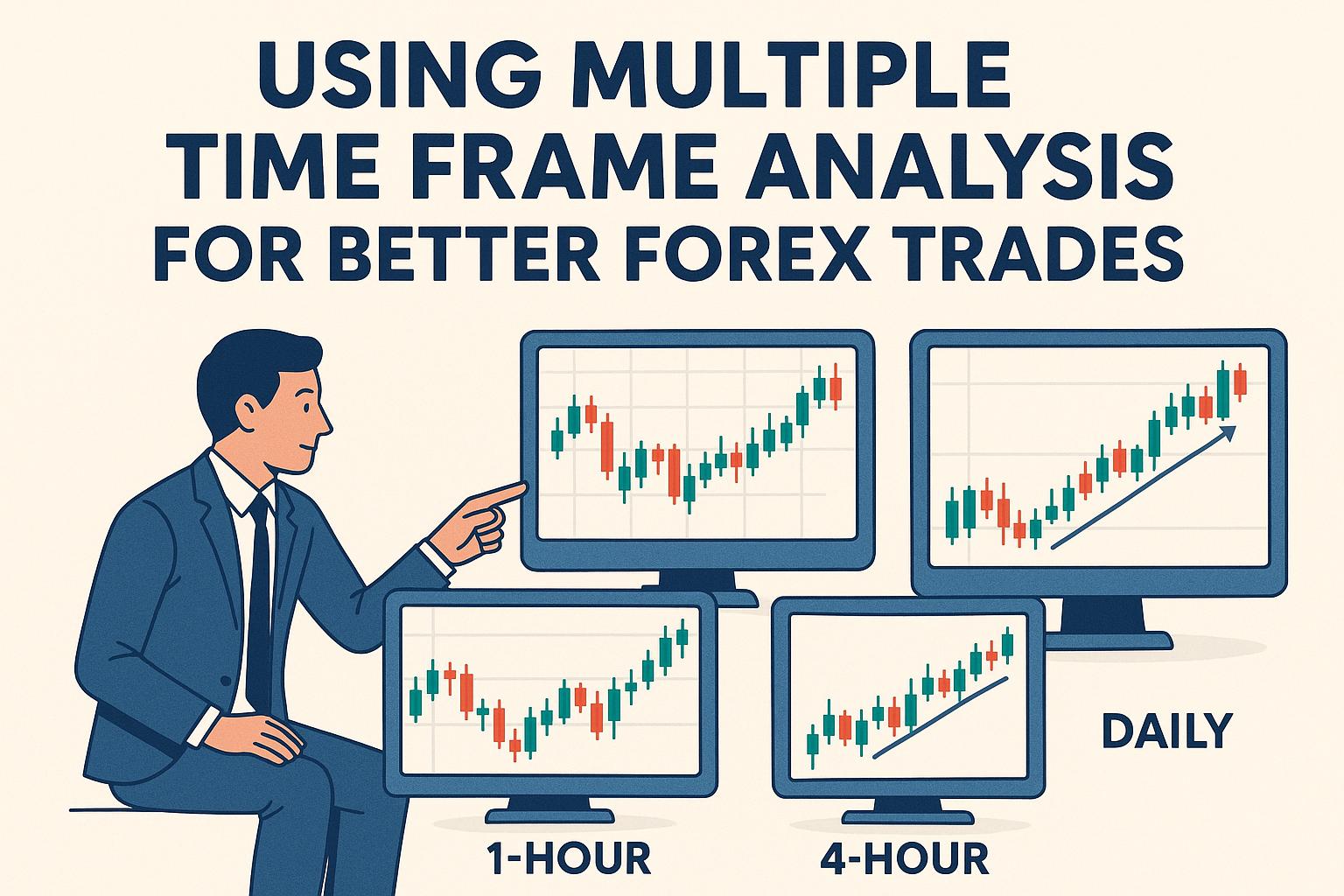Understanding Multiple Time Frame Analysis
Multiple Time Frame (MTF) analysis is a strategic approach employed by traders in the Forex market to gain a comprehensive view of currency price movements. It involves examining different time frames of the same currency pair to make informed trading decisions. This technique can help traders identify long-term trends, potential reversals, and entry and exit points more accurately.
Why Use Multiple Time Frame Analysis?
In the dynamic world of Forex trading, price movements are essentially in constant flux. Relying solely on a single time frame often provides a fragmented or incomplete view of the market. By adopting MTF analysis, traders can achieve a more rounded perspective by gaining insights into both the micro and macro aspects of market trends. The utility of this analysis is not just confined to simply observing price movements but extends to deeper interpretations and predictions of market behavior.
The Three Common Time Frames
MTF analysis typically involves examining three different time frames, and each one serves a specific purpose, providing a unique layer of insight into the market dynamics:
Long-Term: Long-term analysis is generally represented by daily or weekly charts. This time frame is crucial for establishing the primary market trend, whether it be bullish, bearish, or ranging. Understanding the general direction of the market enables traders to align their strategies in harmony with the prevailing trend, thus increasing the likelihood of success. By observing the long-term time frame, traders can better gauge the overall market sentiment which can significantly influence trading decisions over extended periods.
Medium-Term: Represented usually by 4-hour or daily charts, this time frame occupies the middle ground between long-term strategic outlook and short-term tactical moves. Medium-term analysis helps traders identify intermediate trends and corrections within the primary trend identified in the long-term frame. It’s an effective way of spotting potential retracements or consolidation phases that might have temporary influence over the prevailing market trend. Analyzing the medium-term can provide clarity regarding the sustainability of the observed primary trends and highlight moments when the market might diverge from its current path.
Short-Term: This time frame employs 1-hour or 15-minute charts. In a section of heightened activity, the short-term time frame provides signals that are crucial for determining precise entry and exit points. While embedded in the broader context of the market environment determined by the long- and medium-term frames, short-term analysis informs the tactical decisions that can greatly influence the profitability of trades. This is the time frame where traders often execute their trades, making it fundamental to synchronize decisions with the overarching trends recognized in the broader market analysis.
Integrating MTF Analysis into Forex Strategies
Successful integration of MTF analysis into a coherent Forex trading strategy can significantly enhance decision-making efficiency. Here’s a generalized step-by-step approach to implement MTF analysis in trading:
1. Start with the Long-Term Chart: Upon commencing, traders first determine the direction of the overall market trend. Identifying whether the trend is bullish, bearish, or ranging sets a framework that guides subsequent analysis and execution steps.
2. Check the Medium-Term Chart: It’s essential next to evaluate any existing pullbacks or intermediate trends that may impact the sustainability of the prevailing long-term trend. This time frame provides a clearer picture of market corrections and consolidations—elements that can temporarily cloud or interfere with the overall market direction.
3. Examine the Short-Term Chart: In this phase, traders seek more granular insights that help identify precise points for entering and exiting trades. The short-term analysis is intricately aligned with the overall trend direction identified earlier, ensuring that trades are executed in a favorable context.
Thorough application of each step is necessary to maximize the potential of MTF analysis, facilitating more informed and potentially profitable trading decisions.
Potential Challenges of MTF Analysis
No trading strategy is without its own set of challenges, and MTF analysis is no exception. One primary challenge is the potential for conflicting signals between the different time frames. For instance, while a long-term chart might indicate a bullish trend, a medium-term pullback could suggest bearish conditions, creating a dilemma for traders. Navigating these discrepancies requires careful consideration and robust analytical skills.
Additionally, MTF analysis can be quite time-intensive. Monitoring multiple charts and performing recurring evaluations necessitates effort and a substantial time commitment. Traders should be well-versed in technical analysis and competent in recognizing patterns to use this method to its greatest effect. Acquiring these skills might require additional time devoted to learning and mastering MTF analysis intricacies, beyond mere chart observation.
In conclusion, by implementing Multiple Time Frame analysis, traders can significantly enhance their market perspective. This facilitates more informed decision-making that transcends the insights normally provided by singular time frame analysis. This layered approach offers traders a robust tool to navigate the complex Forex market efficiently, thus potentially providing a significant edge in trade execution and ongoing management. Implementing MTF analysis is an advanced method conducive to informed trading strategies adapted to a variety of market conditions.
This article was last updated on: October 22, 2025
